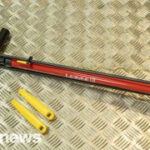Outlaw motorcycle gangs, often referred to as biker gangs or one-percenter clubs, hold a notorious place in the cultural landscape, particularly in the United States where they originated. These groups, shrouded in mystique and often misrepresented in popular culture, operate under a unique code and display distinct symbols that set them apart. Understanding the culture of biker gangs is crucial to grasping their influence and the complex dynamics within this subculture.
The term “one-percenter” is central to the identity of these outlaw bikers. This moniker arose from a 1947 statement by the American Motorcycle Association (AMA) following a disruptive motorcycle rally in Hollister, California. The AMA declared that “99% of the motorcycling public are law-abiding; there are 1% who are not.” Biker gangs embraced this label, the “1%,” as a badge of honor, signifying their rejection of mainstream society and their embrace of an outlaw lifestyle. This “1%” patch (Figure 1) became a potent symbol, worn exclusively by clubs deeply entrenched in this culture and assertive enough to defend their claim as the “baddest of the bad.”
Figure 1.
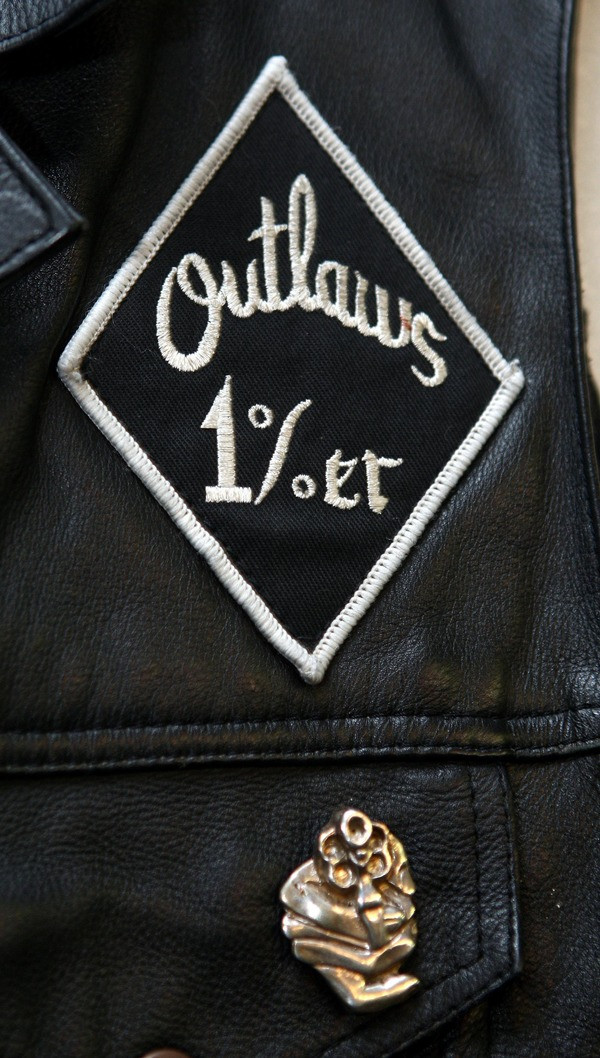 One-percenter patch on a leather vest, symbol of outlaw motorcycle clubs, representing defiance of societal norms and the embrace of a counter-culture lifestyle.
One-percenter patch on a leather vest, symbol of outlaw motorcycle clubs, representing defiance of societal norms and the embrace of a counter-culture lifestyle.
The Criminal Hierarchy of Biker Gangs
Within the world of one-percenter clubs, a hierarchy exists, categorizing groups based on their structure, influence, and criminal involvement. This hierarchy helps to understand the complex relationships and power dynamics within the biker gang subculture. Quinn and Forsyth categorize these clubs into four main types:
- Support Clubs: These groups maintain affiliations with larger, more established one-percenter clubs. While involved in some criminal activities, their primary role is to provide support and bolster the reputation of the dominant club they are associated with, offering protection and manpower. An example is the Gray Ghosts MC.
- Satellite Clubs: Created and controlled directly by larger one-percenter clubs, satellite clubs act as recruitment grounds. Members of these clubs perform tasks related to the criminal operations of the larger club, essentially serving as an extension of their parent organization. The Red Rockers MC exemplifies this type.
- Regional Clubs: Typically smaller in membership and geographically limited, regional clubs like the Devils Disciples MC may or may not claim one-percenter status. They often have connections to larger clubs and operate within their sphere of influence.
- Major One-Percenter Clubs: Sitting at the apex of this hierarchy are the large, international clubs such as the Hells Angels MC, Mongols MC, and others. These are the dominant forces in the outlaw biker world, dictating much of its landscape and dynamics.
The relationships between these clubs are intricate and can range from temporary alliances, often seen among the larger clubs, to smaller local clubs effectively surrendering autonomy to international giants. Even when regional clubs relinquish the “1%” logo, they often retain the core characteristics of outlaw biker culture: aggression, impulsivity, and intense loyalty. Satellite clubs function as a readily available workforce for larger clubs, and as a proving ground for individuals aspiring to join the ranks of major international biker gangs.
It’s also noteworthy that biker gangs in the U.S. are predominantly white, with the significant exception of the Mongols MC, which has a strong Chicano membership. Historically, there have been overlaps between biker gang culture and white supremacist ideologies, reflecting the complex social tapestry within which these groups operate.
While less documented in mainstream narratives, Black OMGs exist and operate within their own distinct spheres, with unique symbols and values. These groups, composed of African American or mixed-race members, tend to exhibit different organizational structures and entrepreneurial approaches compared to predominantly white OMGs. They also utilize the internet less frequently. Predominantly regional or local, Black OMGs are more commonly found on the East and West Coasts of the U.S. Examples include the California-based Chosen Few MC and the Pennsylvania/East Coast-based Wheels of Soul MC. Interestingly, some Black OMGs adopt slogans, symbols, and even names similar to those of white OMGs. While white OMGs often exert dominance over Black OMGs, affiliations do exist, showcasing the nuanced inter-group dynamics.
The Hells Angels, Bandidos, Mongols (Figure 2), Outlaws, Sons of Silence, and Pagans MCs are consistently identified as the most powerful and influential OMGs. It’s beneficial to be aware of which biker gangs are active in specific regions. Resources from law enforcement agencies and even the gangs’ own websites (where available) can offer insights into local presences and affiliations.
Figure 2.
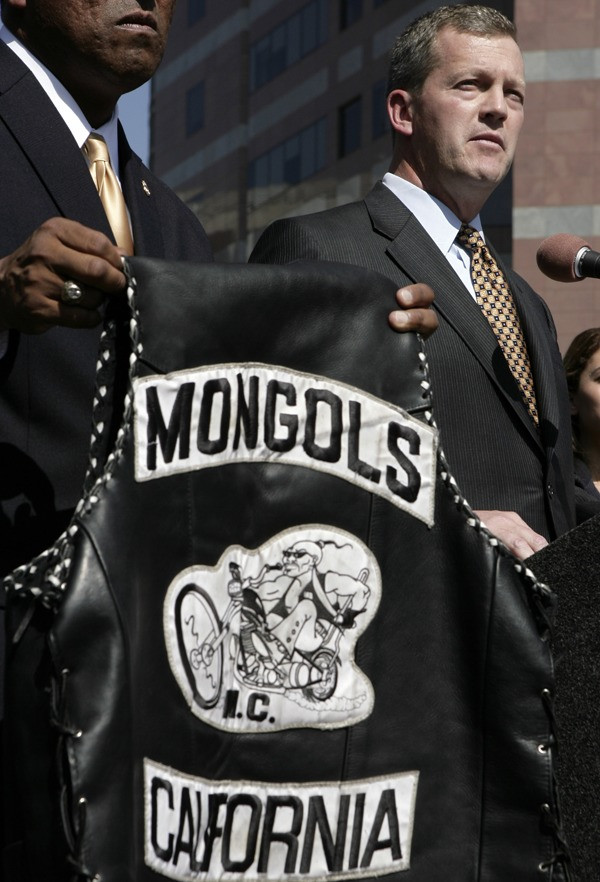 Mongols Motorcycle Club "colors" patch displayed on a biker vest, featuring the club's logo and colors, representing gang affiliation and identity within the outlaw motorcycle community.
Mongols Motorcycle Club "colors" patch displayed on a biker vest, featuring the club's logo and colors, representing gang affiliation and identity within the outlaw motorcycle community.
Gang Insignia: Colors, Patches, and Identity
Patches and tattoos are not mere decorations for biker gang members; they are integral to the sect-like symbolism of their subculture. These insignia communicate a wealth of information, reflecting a member’s history, allegiances, and status within the gang.
The most defining piece of attire is the “colors” – a sleeveless jacket, typically leather or denim, that instantly identifies a biker’s club affiliation. Patches, often called “rockers,” are sewn onto these colors and are treated with deep respect by members and associates. A standard set of colors usually features three main patches on the back:
- Top Rocker: Displays the club’s name.
- Center Patch: Features the club’s distinctive logo or emblem.
- Bottom Rocker: Indicates the geographical chapter or location of the biker’s club.
These colors are so deeply intertwined with a biker’s identity that any disrespect towards them can provoke a hostile reaction.
Given the sheer number of biker gangs, memorizing every logo is impractical. However, recognizing the color schemes associated with local OMGs and their support clubs, along with the ubiquitous “1%” patch, is highly valuable. Most OMGs adopt a two-color scheme for their insignia. For instance, the Hells Angels MC are known for their red and white “Death’s Head” logo (Figure 3), while the Bandidos MC utilize red and gold with their “Fat Mexican” logo (Figure 4).
Figure 3.
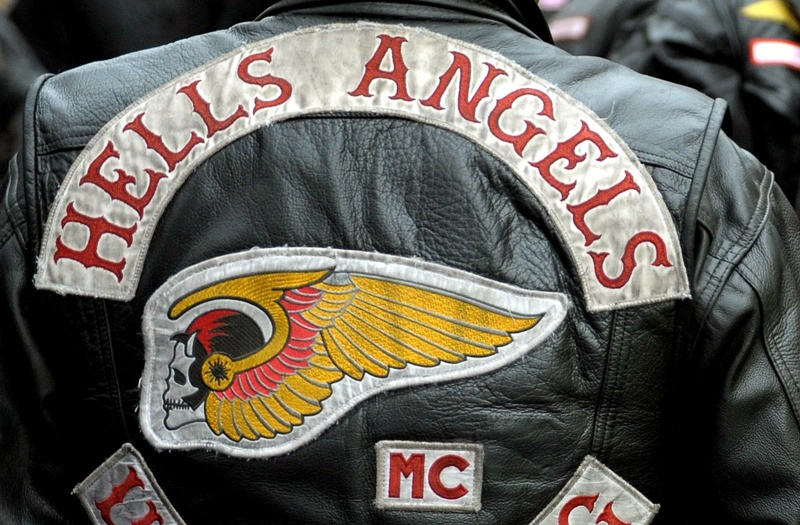 Hells Angels "Death's Head" logo patch embroidered in red and white, a powerful and recognizable symbol of one of the most infamous biker gangs globally.
Hells Angels "Death's Head" logo patch embroidered in red and white, a powerful and recognizable symbol of one of the most infamous biker gangs globally.
Figure 4.
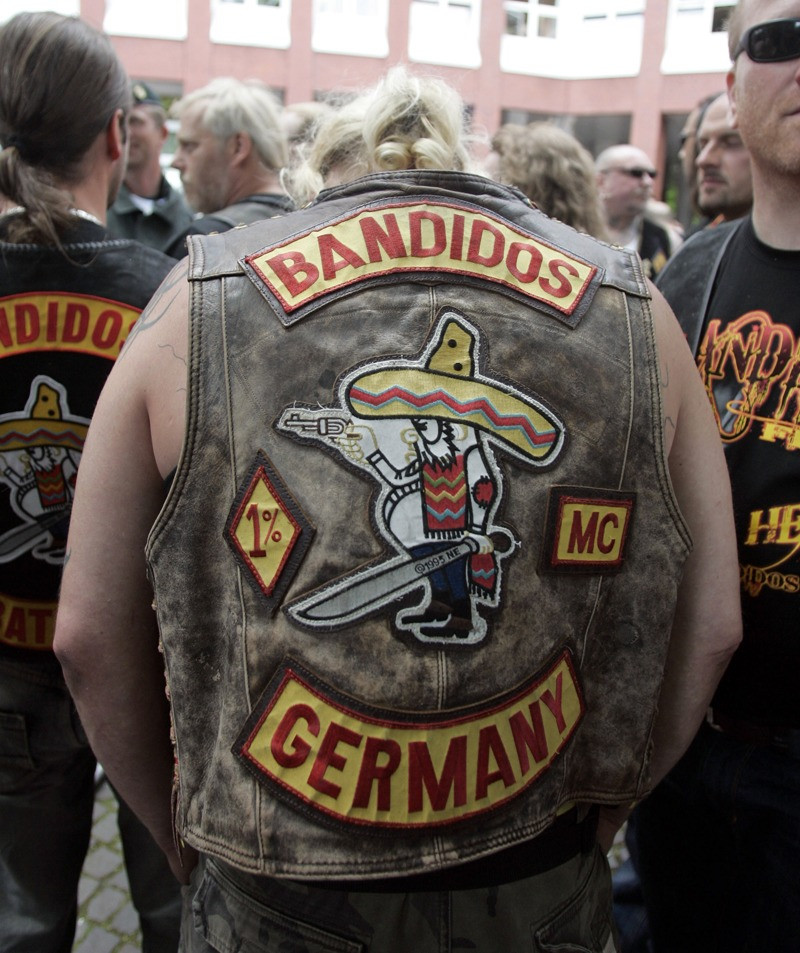 Bandidos Motorcycle Club "Fat Mexican" logo patch in red and gold, a controversial yet iconic symbol representing the gang's identity and outlaw ethos.
Bandidos Motorcycle Club "Fat Mexican" logo patch in red and gold, a controversial yet iconic symbol representing the gang's identity and outlaw ethos.
Associates and support club members often use the color scheme of the sponsoring club but are forbidden from displaying the main insignia. For example, support clubs of the Bandidos might incorporate red and gold in their own patches but would not wear the “1%” patch or the “Fat Mexican” logo. Only fully patched members have the right to display the club’s logo, a privilege fiercely protected. Clubs often copyright their logos and symbols to maintain exclusivity.
The “1%” logo itself, diamond-shaped, is usually worn on the front or back of the colors. Club officers also wear patches indicating their rank, and some bikers display patches showing chapters they are affiliated with. Interestingly, some independent clubs avoid the “1%” patch to evade challenges from larger gangs, but this doesn’t negate their potential for violence or the intense loyalty among members. Color recognition remains a more reliable indicator of OMG affiliation than the presence of a “1%” patch.
Beyond patches, tattoos, T-shirts, and jewelry also incorporate club acronyms, symbols, and logos. Support gear might use a variation of the main club’s color scheme with different symbols. For example, Outlaws MC associates (whose colors are black and white) might wear support gear featuring a hand gripping a pistol or a Harley-Davidson logo with “Support Black & White.” Earning full membership often involves getting the club’s logo tattooed, a permanent mark of allegiance. Conversely, members who fall out of favor must remove club-related tattoos, often through brutal self-inflicted methods or by covering them up.
Acronyms are also deeply embedded in biker gang culture. “LPDP” (Live Pagan, Die Pagan) and “AFFA” (Angels Forever, Forever Angels) are common examples. “FTW,” standing for “Fuck the World,” is another prevalent acronym, originating from the saloon culture that birthed the one-percenter ethos. Biker gangs frequently refer to themselves as “nations,” such as “Mongol Nation” or “Green Nation” (Vagos MC), reinforcing their sense of collective identity and separation from mainstream society.
The Potential for Conflict and the Biker Gang Mentality
Respect and honor are paramount in biker gang culture. Any perceived disrespect, whether real or imagined, can escalate into violence. Biker gang members are conditioned to react strongly to protect their own honor and that of their gang. This emphasis on respect and “saving face” is a core tenet of their interactions, both within and outside the gang.
Power and respect are the driving values. While biker gangs include both impulsive individuals and more calculated, entrepreneurial types, both are capable of extreme violence. Most members embody a mix of these traits. Treating all bikers with respect, regardless of personal feelings or perceived behavior, is crucial in defusing potential conflict.
The “all for one, one for all” ethos is deeply ingrained. Biker gangs function as a blend of tribe, family, and even corporation. An attack on one member is considered an attack on the entire club, demanding a collective response to restore honor. Historical incidents illustrate this reactivity, with groups mobilizing rapidly and aggressively in response to perceived threats or disrespect towards a member.
This organizational strength and readiness for aggressive action mean that encounters with biker gangs require a heightened awareness. Understanding their symbols, values, and hierarchical structure is essential for anyone interacting with this subculture, whether in a professional capacity or simply in public spaces.
While biker gangs share some characteristics with other types of gangs, their unique symbols and culture, deeply rooted in the one-percenter philosophy, set them apart. Recognizing these elements is key to understanding the biker gang mentality and navigating potential interactions with awareness and respect.
REFERENCES
(Note: As per instructions, references from the original article are not directly carried over in this rewritten version for usabikers.net, focusing on content adaptation and SEO. For a formal academic context, referencing would be essential.)

